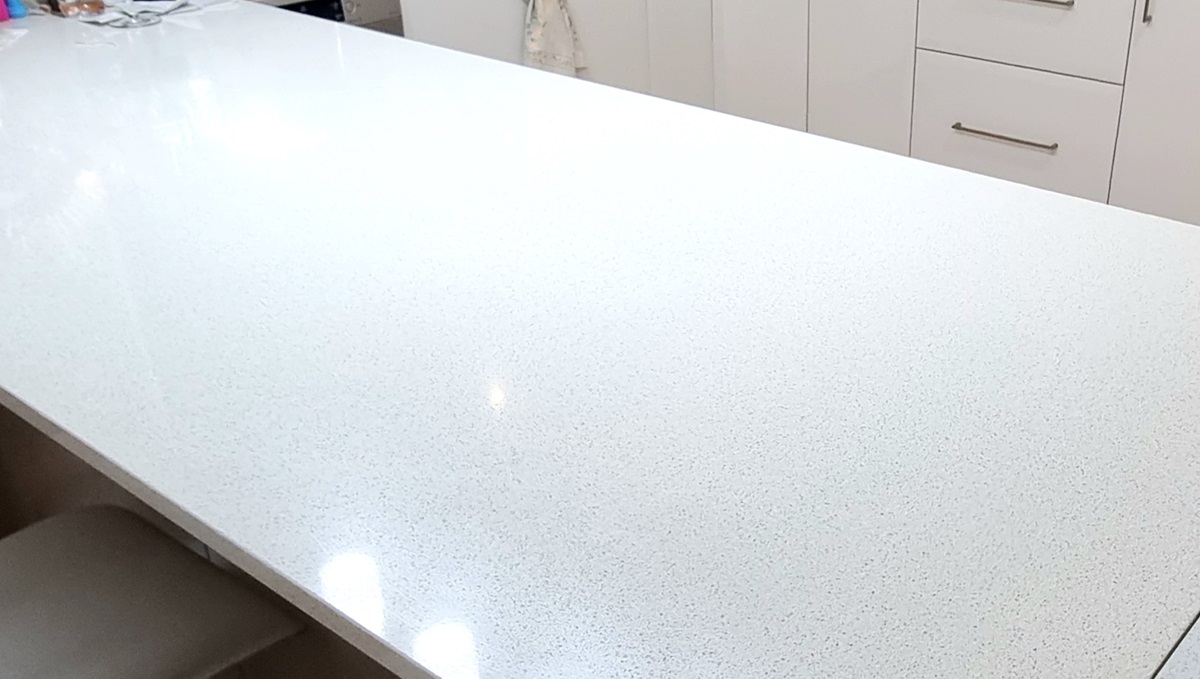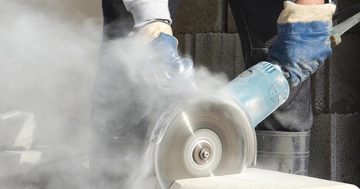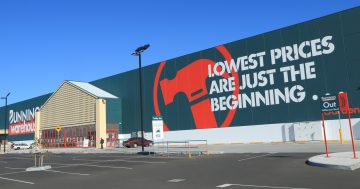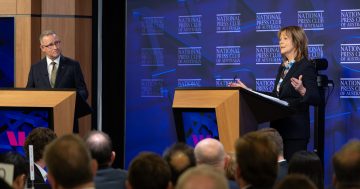
The first case of silicosis from working with engineered stone was reported in 2015. Photo: Andrew McLaughlin.
The Australian union movement’s push to ban engineered stone has gained momentum with the Australian Council of Trade Unions (ACTU) resolving to end its use by mid-2024.
The ACTU’s announcement comes after Construction Forestry Mining and Energy Union (CFMEU) membership called on the Labor Party at its August annual conference in Brisbane to ban the product’s use.
The resolution follows revelations in recent years that the silica dust from cutting and machining engineered stone has been found to cause silicosis, a lung disease thought as debilitating and deadly as mesothelioma or asbestosis.
The ACTU says as many as 25 per cent of stonemasons who have worked with engineered stone have been found to have contracted silicosis which is not only incurable and debilitating, but sometimes fatal.
“It’s time to draw a line in the sand and ban the use of deadly engineered stone products. Workers’ lives are on the line,” ACTU assistant secretary Liam O’Brien said. “This is something every unionist needs to get behind, because the right to a safe workplace is fundamental, no matter what your job is.”
Engineered stone is a composite material most often used in kitchen and bathroom benchtops. One of the most common engineered stone brands used in domestic applications is Caesarstone.
It is made from crushed stone bound together by an adhesive of polymer resin or cement to create a solid surface. Silicon dioxide, or silica is a common naturally occurring mineral found or manufactured in different forms broadly categorised as crystalline or non-crystalline (amorphous). The most common form of silica is quartz, but it is also found in some stones, rocks, sand, gravel and clay.
Silica can also be used in some bricks, tiles and paver products. Silica dust is released into the air in microscopic particles when the product is cut or shaped, and can be inhaled even through face masks.
The inhaled dust can cause inflammation of the lungs which leads to scarring of the lung tissue. In the worst cases, scarring leads to a stiffening of the lungs which makes it difficult to breath.
“Since the first case of silicosis associated with engineered stone was reported in 2015, the numbers of diagnoses have risen dramatically,” Mr O’Brien said.
“While silicosis cases have been found in workers across a range of industries and work silica-containing materials, a disproportionate number of silicosis diagnoses have emerged from those working specifically with engineered stone.
“It doesn’t have to be this way. Knowing what we know now, there is no justification for the continued use of engineered stone and other dangerous silica products. ”
ACT Work Health and Safety had proposed a ban on dry cutting of stone and other products containing silica using power tools in 2022, but this was delayed after industry stakeholders raised issues with the move.
When asked about the ACTU’s resolution during a media doorstop on Tuesday (24 October) morning, acting Prime Minister Richard Marles said the Federal Government was examining the issue, but stopped short of committing to a ban of the product.
“We absolutely are aware of the significant health impacts associated with working with engineered stone,” he said. “We are very mindful of this, and we are working with trade unions who have been very active in this area – rightly – around what the way forward is.
When asked whether a report by Safe Work Australia into engineered stone should be publicly released, he said the Government was still working through the report.
“We’re working through what it is saying, and speaking with unions about this as well so we can plot the best way forward,” Mr Marles said.
“This is a very significant area, but it is a very significant issue workers in this space are having. It’s really important we are making sure Australian workplaces are as safe as they can be. And that very much includes in respect of engineered stone.”
















